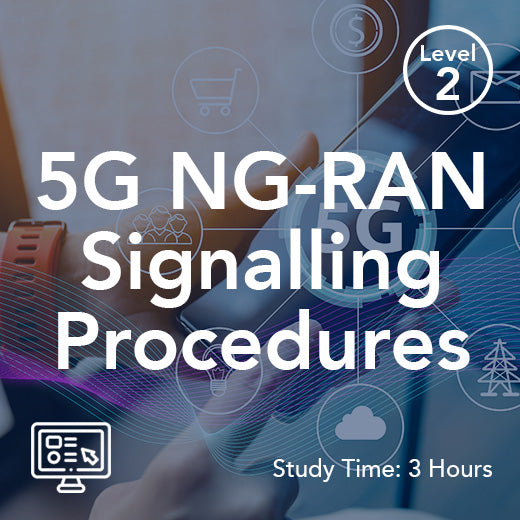Understanding the SIM Application Toolkit: A Simple Guide for Everyone
- , by Stephanie Burrell
- 9 min reading time
In today's digital age, mobile phones are more than just communication tools; they are essential companions in our daily lives. At the heart of these versatile devices lies the SIM card, a small but mighty component that does more than connect you to a network. Enter the SIM Application Toolkit (SAT), a feature often overlooked but incredibly powerful. This toolkit allows SIM cards to interact with the mobile device, enabling a range of services and customisations. In this guide, we'll demystify the SIM Application Toolkit, exploring its functions and benefits, to help you understand how it enhances your mobile experience.
Introduction to SIM Application Toolkit
The SIM Application Toolkit (SAT) is a crucial yet often unnoticed component of mobile technology. It offers a bridge between the SIM card and mobile devices, expanding the capabilities of a standard SIM card beyond basic network access and enabling value added services . In this section, we'll delve into the basics of the SIM Application Toolkit and understand the roots of SIM technology.
What is the SIM Application Toolkit?
The SIM Application Toolkit is a set of standards of the GSM system which enables the SIM to initiate actions that can be used for various services. Essentially, it allows a SIM card to interact with the mobile device and network. This interaction facilitates a range of applications, from simple text-based services to more complex multimedia options.
-
The toolkit can prompt the mobile device to display menus and request user inputs.
-
It can send messages to the network or initiate calls.
-
It supports services like mobile banking, subscription services, and more.
This makes the toolkit a flexible and valuable asset in the evolving landscape of mobile communications, enhancing functionality without requiring additional hardware.
Historical Background of SIM Technology
Understanding the SIM Application Toolkit requires a look back at the development of SIM technology. SIM cards were introduced in the early 1990s as part of the GSM standard, revolutionising mobile communications through the use of the sim toolkit by storing subscriber information securely.
-
Initially, SIM cards were simple, storing only essential data like the International Mobile Subscriber Identity (IMSI) and a few security keys.
-
Over time, as mobile technology evolved, SIM cards gained more processing power and memory, paving the way for the development of the SIM Application Toolkit.
-
The introduction of the toolkit in the mid-1990s marked a significant step, allowing dynamic interaction between the SIM card and the mobile device.
By understanding this evolution, one can appreciate how the toolkit fits into the broader narrative of mobile technology development.
Features of the SIM Application Toolkit
In this section, we explore the core features and functions of the SIM Application Toolkit. Understanding these features provides insights into how the toolkit enhances user interaction and adds value to mobile services.
Key Functions and Capabilities
The SIM Application Toolkit offers a range of functions that significantly enhance the capabilities of mobile devices. Key functions include user interaction, network communication, and service provisioning.
-
User Interaction: The toolkit enables the display of menus on the mobile device, allowing users to navigate through options and make selections. This interaction is crucial for services like mobile banking.
-
Network Communication: It facilitates communication between the SIM card and the network, enabling updates and service provisioning without user intervention.
-
Service Provisioning: Operators can remotely configure services on a user's device, adding new functionalities or updating existing ones seamlessly.
These capabilities make the toolkit an indispensable tool for mobile operators, allowing them to deliver personalised and efficient services to users.
Advantages of Using the Toolkit
The SIM Application Toolkit offers numerous advantages that benefit both users and service providers. Understanding these advantages highlights why it's a vital component in mobile communications.
For users, the toolkit provides a seamless and user-friendly way to access a variety of services through the sim toolkit app without needing additional applications. This simplicity is crucial for those who may not be tech-savvy but still wish to access advanced mobile features.
For service providers, the toolkit offers a cost-effective way to deliver services without the need for extensive infrastructure changes. It allows for rapid deployment of new services and updates, keeping pace with technological advancements.
-
It enhances user engagement through straightforward interfaces.
-
It reduces the need for customer support by simplifying service access.
-
It provides a platform for innovative services, driving customer satisfaction.
This combination of user and provider benefits underscores the toolkit's importance in the mobile ecosystem.
Practical Applications in Everyday Life
The SIM Application Toolkit is not just a theoretical concept; it has real-world applications that impact everyday life. This section explores how the toolkit is used in practical scenarios, enhancing convenience and security for users.
Mobile Banking and Transactions
One of the most prominent applications of the SIM Application Toolkit is in mobile banking and transactions. The toolkit provides a secure and straightforward way for users to manage financial transactions directly from their mobile devices.
-
Users can transfer funds, check balances, and pay bills using simple menu-driven interfaces.
-
The toolkit ensures security by using encryption and secure communication channels.
In regions where internet access is limited, the toolkit enables financial inclusion by allowing users to perform banking tasks without needing a smartphone or data connection. This capability has revolutionised banking in developing economies.
-
Promotes financial inclusion in rural and underserved areas.
-
Provides a reliable alternative to traditional banking methods.
-
Empowers users with secure, anytime, anywhere banking capabilities.
Enhanced Security Features
Security is a top priority in mobile communications, and the SIM Application Toolkit plays a crucial role in enhancing security features when activated . Through its integration with the mobile device and network, the toolkit provides multiple layers of security.
-
It supports secure PIN entry, ensuring that transactions and services are protected.
-
The toolkit can trigger network-initiated commands to lock or wipe a device remotely in case of theft.
These features are vital for protecting sensitive information and maintaining user trust. With security breaches becoming more common, the SIM Application Toolkit offers a robust solution to safeguard user data.
-
Ensures secure user authentication and access to services.
-
Protects against unauthorised access and data breaches.
-
Enhances trust between users and service providers.
How the SIM Toolkit Works
To appreciate the power of the SIM Application Toolkit, it's essential to understand how it operates. In this section, we explore the interaction between the SIM card and mobile devices and its role in network communication.
Interaction with Mobile Devices
The SIM Application Toolkit interacts with mobile devices to provide a seamless user experience. This interaction is central to delivering the various services that the toolkit supports.
-
Command Execution: The SIM card sends commands to the mobile device, which are executed to display menus or initiate actions like sending messages.
-
User Inputs: Users interact with these menus, and their inputs are sent back to the SIM card for processing.
-
Service Delivery: Based on user inputs, services are delivered, such as sending a text or initiating a call.
This process happens quickly and efficiently, allowing users to access services with minimal delay. The toolkit's ability to interact with a wide range of devices makes it a versatile tool in the mobile landscape.
Role in Network Communication
The SIM Application Toolkit also plays a crucial role in facilitating communication between the SIM card and the network. This communication is vital for maintaining service quality and delivering updates.
-
The toolkit enables the SIM to send proactive commands to the network, requesting updates or changes to services.
-
It supports over-the-air updates, allowing operators to push new services or security patches directly to the SIM card.
This capability ensures that users always have access to the latest services and security enhancements without needing to visit a store or change their SIM card.
-
Facilitates seamless updates and service changes.
-
Ensures consistent service quality and performance.
-
Supports innovation in service delivery and user experience.
Future of the SIM Application Toolkit
As technology evolves, so does the SIM Application Toolkit. This section examines the future prospects of the toolkit, considering both technological advancements and potential challenges that may arise.
Technological Advancements
The future of the SIM Application Toolkit is promising, with technological advancements poised to expand its capabilities further. Emerging technologies and trends are set to influence the toolkit's evolution.
-
5G Integration: As 5G networks become more widespread, the toolkit will likely incorporate features that leverage the speed and low latency of these networks.
-
Enhanced User Interfaces: Advances in user interface design will allow for more intuitive and visually appealing menu systems.
With these advancements, the toolkit is expected to play an even more significant role in mobile communications, offering enhanced services and improved user experiences.
-
Greater integration with emerging technologies.
-
Improved user interactivity and functionality.
-
Continued relevance in a rapidly evolving tech landscape.
Potential Challenges and Solutions
Despite the promising future, the SIM Application Toolkit may face several challenges. Addressing these issues is crucial to ensuring its continued success and relevance.
-
Security Threats: As with any technology, the toolkit may be susceptible to security threats. Continuous updates and robust encryption are necessary to mitigate these risks.
-
Compatibility Issues: With a plethora of devices and operating systems, ensuring compatibility can be challenging. Standardisation efforts will be crucial to overcoming this hurdle.
Addressing these challenges will require collaboration between device manufacturers, network operators, and software developers, ensuring that the toolkit remains a vital component of mobile technology.
-
Implement strong security protocols and regular updates.
-
Foster industry collaboration for compatibility and standardisation.
-
Invest in research and development to anticipate future challenges.


































